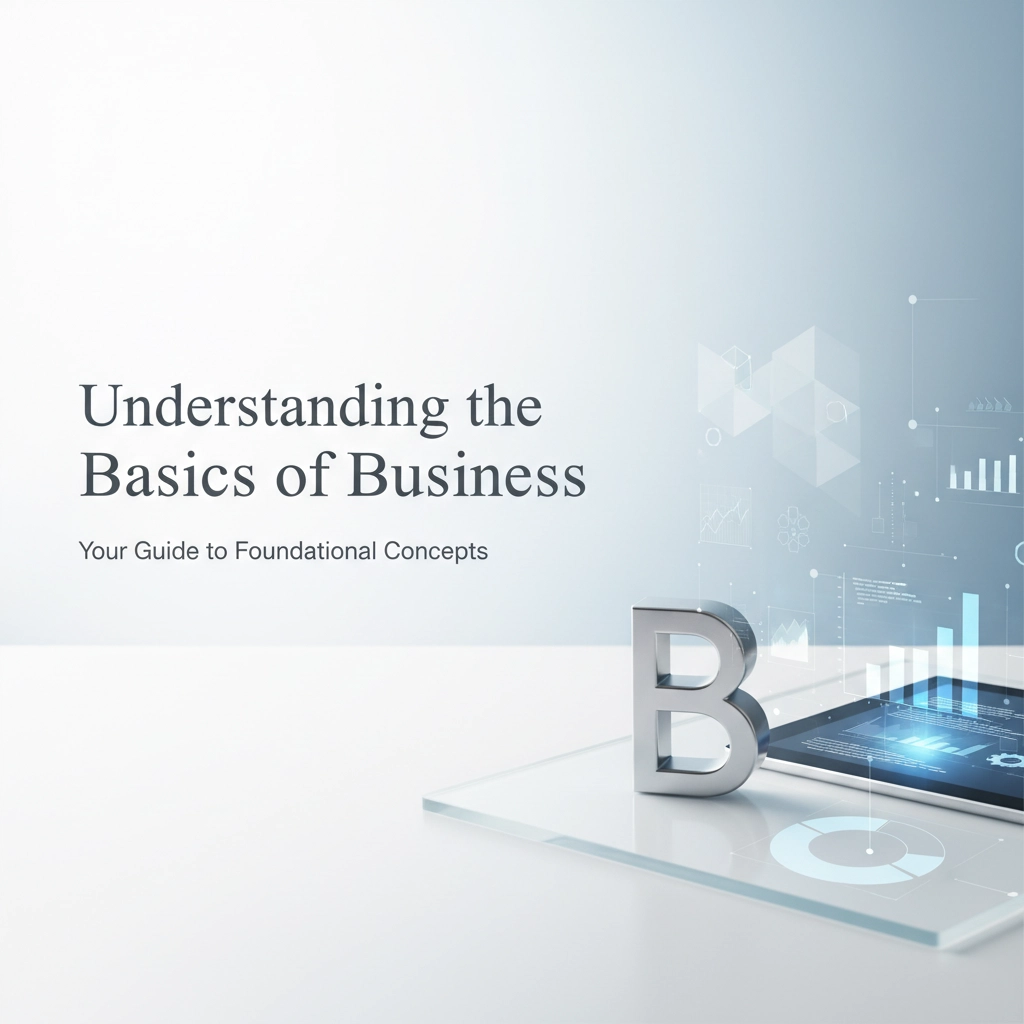
Starting a business can feel overwhelming, especially when you're bombarded with complex jargon and endless advice. But here's the truth: successful businesses are built on mastering a few fundamental principles. Whether you're thinking about launching your first venture or you've already taken the plunge, understanding these basics will set you up for long-term success.
Think of business fundamentals as your roadmap – they'll guide you through the inevitable challenges and help you make smart decisions when things get complicated. Let's break down the essential building blocks every business owner needs to know.
Before you dive into operations, you need to decide what type of business you're running. This isn't just paperwork – your business structure affects everything from taxes to personal liability.
Sole Proprietorship is the simplest option. You own everything, control everything, and are personally responsible for everything. It's perfect for freelancers or single-person operations, but remember – if something goes wrong, your personal assets are on the line.
Limited Liability Company (LLC) offers protection for your personal assets while keeping things relatively simple. You get tax flexibility and operational ease without the complexity of a corporation. It's a popular choice for small businesses for good reason.
Corporations are more complex but offer the strongest protection and best options for raising capital. If you're planning to grow big or bring in investors, this might be your path.
The key is choosing what fits your current situation while considering where you want to be in five years. Don't overcomplicate things early on, but don't paint yourself into a corner either.

Here's where many new business owners get tripped up: they confuse revenue with profit. Revenue is all the money coming into your business – every sale, every payment. Profit is what's left after you pay all your expenses. You can have high revenue and still lose money if your costs are too high.
Understanding Your Numbers
Budgeting Basics That Actually Work
Start with a simple budget that tracks three things: what money comes in, what money goes out, and when. Cash flow timing matters – you might be profitable on paper but struggle to pay bills if customers pay late.
Create separate budgets for:
Track everything religiously for your first year. You'll quickly learn what's realistic and where you need to adjust. Many successful businesses use simple spreadsheets – you don't need expensive software to start.
A business plan doesn't have to be a 50-page novel, but you do need direction. Think of planning as creating your business GPS – it shows you where you're going and helps you course-correct when needed.
Essential Planning Elements:

The best business plans are living documents. Review and update yours every quarter. Markets change, opportunities arise, and your business will evolve – your plan should too.
Goal Setting That Drives Results
Set SMART goals (Specific, Measurable, Achievable, Relevant, Time-bound) for different time horizons:
Excellent customer service isn't just about being nice – it's a competitive advantage that drives growth. Happy customers buy more, refer others, and cost less to retain than acquiring new ones.
Building Customer Relationships
Creating Systems for Consistency
Document your customer service processes so every interaction meets your standards. Train your team (even if it's just you right now) on these standards. Consistency builds trust, and trust drives loyalty.
Consider implementing simple systems like:

Great businesses run on solid systems and processes. This might seem boring compared to the exciting parts of entrepreneurship, but getting operations right frees you to focus on growth and innovation.
Key Operational Areas:
Technology and Tools
You don't need to invest in expensive software right away, but some basic tools can save you significant time:
Speaking of cybersecurity, this is where partnering with experts like NetSec Technologies becomes invaluable. As your business grows and handles more sensitive data, proper security measures aren't optional – they're essential for protecting both your business and your customers.
You can have the best product in the world, but if people don't know about it, you won't succeed. Marketing and sales work together to attract customers and convert them into buyers.
Marketing Basics:
Sales Fundamentals:

Beyond basic budgeting, you need systems to monitor your business's financial health. This includes understanding key metrics that indicate how well your business is performing.
Critical Financial Metrics:
Regular financial reviews help you spot problems early and identify opportunities for improvement. Schedule monthly financial check-ins to review these metrics and adjust your strategy accordingly.
Even if you're starting solo, eventually you'll need help. Building a strong team starts with understanding what roles you need to fill and what kind of culture you want to create.
Hiring Smart:
Remember, your employees represent your business to customers. Invest in their success, and they'll invest in yours.
Understanding business basics isn't about memorizing theories – it's about building practical skills that help you make better decisions every day. Start with these fundamentals, but remember that learning is ongoing. Markets change, customer needs evolve, and new opportunities emerge constantly.
The most successful business owners are those who never stop learning and adapting. Master these basics first, then keep building on that foundation. Your business journey will be challenging, but with solid fundamentals in place, you'll be ready for whatever comes next.
Focus on one area at a time, implement what you learn, and don't try to perfect everything before moving forward. Progress beats perfection every time in business.